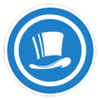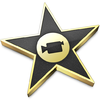Faculty Starter Application Set
About This Article
WSU offers Tablets to all students that are part of the E-Warrior: Digital Life and Learning program. These tablet devices can be valuable educational tools when integrated fully into the curriculum. This article gives some examples of tablet applications that can be used as a vehicle to ease into using tablets in class. It is intended for WSU instructors interested in integrating tablet technology into their curricula.
Okay, so I have a tablet, now what?
Great question.
As described in the Integrating Tablets Into the Curriculum article, adding mobile computing to the curriculum can happen at many levels. In this article, we are going to take brief look at several applications and how they can be used to introduce mobile computing as part of the educational experience.
It is important to note that while mobile computing, especially tablets, can be a powerful educational tool, they do not need to be used every day to be effective. Having said that, tablets can be used whenever it is appropriate and whenever they allow for enhanced teaching and learning. Using Tablets regularly is just taking one step further into our increasingly technological world.
Selecting a good place to start
Here are some examples of low-impact ways tablets and mobile computing can be used in the classroom to enhance teaching and learning. These are all straightforward mechanisms that can be added with relative ease. If you are looking to try tablet technology and aren't sure where to start, take a look at the ideas below and pick the one that best fits your style and your class. You can give any of these a try and, if it isn't for you, go right back to the way you did it before with little or no impact.
Making the class more interactive and engaging
Why?
|
How?
- Creating a Top Hat account
- Synchronizing a Top Hat course with a D2L course
- Sending Top Hat course invitations to students
- Adding students to your Top Hat course manually
Because the university has paid for the license, there is no cost to the faculty or the students to use it. Also, because Top Hat uses technology the students already have through the eWarrior Digital Life and Learning program, there is no need for the students to purchase expensive clicker devices.
For more information
- Read the Top Hat article in this Wiki.
- Visit the Top Hat web site.
- Learn more about the Top Hat application for iOS and Android.
Offering electronic textbooks
Why?
|
How?
- Visit the WSU Bookstore, they have access to electronic versions of many of the popular textbooks used on campus.
- Search your publisher's web site.
- Search other sources, like Amazon, for eBooks. Google is also a great source.
- Pass the information on the eBook and the required reader to your students. (Information on the required reader is available from the publisher or distributor.)
There are also many sources for Open Educational Resources (OERs) on the Internet. Organizations like the OER Commons are great places to find free materials.
For more information
- Read the eBook and eReader article in this Wiki.
- The WSU Bookstore is a great resource for finding and evaluating electronic textbooks.
- Amazon sells Kindle versions of textbooks.
- Apple iTunes sells iBooks versions of textbooks. These can be very interactive.
- CourseLoad texts are sold through the WSU Bookstore. CourseLoad is very open to adding new texts to their offerings.
- CourseSmart sells electronic textbooks that are highly collaborative.
Finding a substitute for the same old written paper
Why?
|
How?
- Assign the essay. (Just like with a written paper.)
- Have the students create an outline. (Check out storyboarding applications. Storyboards are a visual means to organizing the content, kind of like panels in a comic book.)
- The students shoot, edit, and submit, all through their tablets.
- Make some popcorn, kick back, and enjoy the show.
For more information
- Using the Camera App to record videos and take photos.
- iMovie for the iPad is an easy way to give a professional feel to videos recorded on the tablet.
- iMovie for iOS support from Apple.
- iMovie for iPad Essential Training from lynda.com.
Using video instruction
Why?
|
How?
- Check out LinkedIn Learning. All content is free to you and your students.
- Search for videos from other sources on the Net. Some great sources include Khan Academy, TED Talks, PBS, NASA, and the Library of Congress. Other sources, like YouTube, can also contain materials that can be used in class.
- Add links to your selected videos to your class. These videos make great additions, bringing in multiple views and perspectives while eliminating the need to lecture on the topic.
For more information
- Khan Academy offers free videos on many STEM, business, project management, and liberal-arts areas, all self-paced and ready to go. All free of charge.
- Ted Talks is a great source for prerecorded professional presentations on many subjects. These are free to use.
- iTunes U has recorded materials from many of the leading educational institutions in the country (including WSU) ready too use free of charge.
Checking your email and using your calendar
Why?
|
How?
Mail and Calendar were synched to your Outlook account when your iPad was configured. Just open the apps and go.
You will find the Calendar app on the first home page and the Mail app on the bar at the bottom of the display.
For more information
- Using the Calendar App.
- Mail on the iPad.
- Mail pointers from Apple Support.
- Calendar pointers from Apple Support.
- The iOS 8: iPhone and iPad Essential Training from lynda.com has sections of Mail and Calendar.
More Information
Related Wiki Topics
- VLC for Android
- VLC for iOS
- Reordering Pages on WordPress Website
- WordPress/Creating Static Pages
- Using Top Hat
- Creating a Top Hat course
- How Top Hat is being used at WSU
- Adding students to your Top Hat course manually
- Sending Top Hat course invitations to students
- Draft:Synchronizing a Top Hat course with a D2L course


